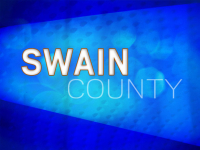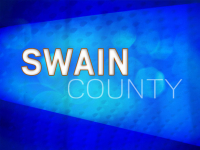You may hear a Blue Dog howl
By Kirkwood Callahan • Guest Columnist
Conservative victories and liberal angst – often repressed — characterized last week’s elections in Virginia and New Jersey. But what lies ahead as the nation’s politicians wrestle with the contentious issues of the economy, healthcare, and a war now in its eighth year? Much data suggest opportunities for conservative victories in 2010. There are also lessons for North Carolinians as well as voters in other states.
Let us look at the results.
In Virginia, governor-elect Bob McDonnell carried 59 percent of the vote. The result contrasts strongly with Obama’s 53 percent vote share last year – the first Democratic win at the presidential level since 1964. Furthermore, McDonnell’s victory was duplicated down the ticket as Republicans won the offices of lieutenant governor and attorney general while also securing seats in the legislature and local councils. Very notable were McDonnell victories in congressional districts won by Democrats in 2008.
In New Jersey Chris Christie defeated the incumbent Gov. Jon Corzine with 49 percent of the vote and a 4-point advantage. The GOP win was not a landslide — a third party candidate captured 6 percent — but the outcome is still very significant. New Jersey has long been a Democratic stronghold. The last Republican to win statewide in New Jersey ran in 1997, and Obama carried the state with 57 percent of the vote.
What conclusions can be drawn and how may they affect future conservative strategy?
Related Items
First, Obama’s star power is limited. The President campaigned for Deeds in Virginia, but then appeared to back off — perhaps because of the candidate’s ambivalence. In New Jersey the president went all out to re-elect Corzine. Obama appeared twice with the governor on the Sunday before election.
Second, money does not guarantee results. In New Jersey, the incumbent Corzine, a multi-millionaire, reportedly spent about $30 million — $20 million or more from his own pocket. Christie, a former U.S. attorney, spent about $11.5 million.
Third, turnout can determine outcomes, and low turnouts can magnify the impact of third party candidates. Though this statement may seem obvious, its importance cannot be stressed too much.
Candidate Obama campaigned hard in Virginia, and his 53 percent of the vote was earned with a 76 percent voter turnout. The turnout this year in Virginia was 42 percent, a 34 percent difference. This year’s exit polls in Virginia indicated that young and African-American voters — part of Obama’s base last year — did not turn out in large numbers.
A similar picture emerges in New Jersey, where the turnout this year was 45 percent compared to 73 percent in the past presidential election. In New Jersey, voters in areas once supportive of the incumbent just stayed home. New Jersey gubernatorial races, as in Virginia, tend to draw less than half of registered voters, while presidential contests draw about 70 percent or more. Candidates who figure out how to get voters to the polls will be victorious in future elections, while those who can’t get voters out of their homes are likely to lose. The growing number of independent voters suggests a growing dissatisfaction with the major parties.
The proportion of New Jersey’s unaffiliated voters — 46 percent — clearly suggests their electoral strength. Unlike our state, New Jersey voters cannot vote in partisan primaries, but this limitation is coupled with easier ballot access for general elections. Christopher Daggett, who bagged 6 percent of the vote, received national publicity, but there were also nine other independent gubernatorial candidates. Daggett’s vote could have made the difference between victory and defeat for Corzine, according to pre-election polls.
Virginia’s voters register on a non-partisan roll. Therefore, it is more difficult to say how many voters consider themselves independent, but research indicates that over a million do so.
Here there is certainly a message for North Carolinians. The share of unaffiliated voters in the Tar Heel state has grown from little more than 8 percent in 1993 to 23 percent today. Over this same period the Democrats went from almost 60 percent to 45 percent. The GOP today has less than a 32 percent share, a fraction less than in 1993.
If the Republican Party intends to extend its winning campaigns into 2010, it must be able to appeal to those who may share its values but have not yet been convinced to identify with the party. Finally, the 49 Democratic congressman — including Heath Shuler, of North Carolina’s Eleventh — who were elected from congressional districts carried by John McCain in 2008 will find themselves in dire straits next fall if they ignore the conservative voices of their constituents back home. Conservative Republican candidates for these congressional seats in Virginia and North Carolina have announced their intent to run, and some have begun fund raising. Conservative Republicans also plan to win seats in Raleigh.
Listen closely: You may hear a Blue Dog howl.
(Kirkwood Callahan has taught American government at southern universities. He is retired and lives in Waynesville.)









